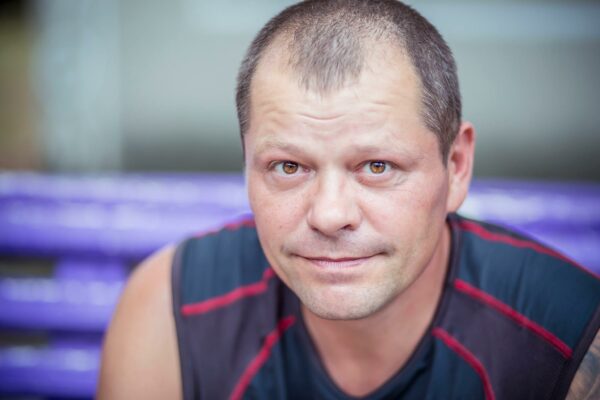Bodynamic Beyond Borders – Ukraine Veterans Project
Written by Malte Waagner Nielsen
Ditte Marcher is a former CEO of Bodynamic International and has worked many years as an international teacher. She is the daughter of the main founder of the Bodynamic system, Lisbeth Marcher.
After numerous requests from different media sources this article has been created to provide information about Ditte’s projects and work in Ukraine since 2006, together with her Bodynamic colleagues and local collaboration partners.1
I would like to thank all Ukrainians mentioned in the article and everyone else in the country who are fighting for their freedom. I would also like to thank Kimberly Barthel for helping with the translation into English and Jonathan Zerbin for editing and layout.
Interview with Ditte Marcher:
Ditte, how did your involvement with the veterans in Ukraine start?
I first began offering Bodynamic Psychotherapy training in Ukraine many years ago. During these training sessions I was assisted by local therapist Oleh Hukovsky.
I happened to be providing Bodynamic training in Ukraine in 2013 and 2014 during the Euromaidan protests and revolution. I chose to travel to Maidan to specifically observe the impact of the fighting and conflict first hand.2 Based upon what I observed I couldn’t help but get involved and attempt to support the locals.
One of the previous participants of Bodynamic training and a close acquaintance of mine in Ukraine had a son, Artem who had been present during the Maidan situation, observing the shooting of people during the conflict. To support his healing, he chose to attend the Shock Trauma training. Despite winning the revolution, Artem had declared his intent to support his comrades on the eastern front to join the fighting. This decision was very stressful and traumatic to his mother. He was her only son and she had limited support from other family members. Seeing this distress in my friend motivated me to want to help in some way. Artem was highly motivated to fight with his best friend on the eastern front. His best friend did eventually die in the conflict on the eastern front.
At the time, young people volunteered to fight in the revolution, there was no real army. Volunteers were poorly equipped with helmets from the second world war, with old boots and supplies that were insufficient. Despite these conditions, young people believed they were demonstrating solidarity in their volunteer participation.
During the Shock Trauma training, I learned that Artem was a trained psychologist. He shared with me a dream of helping other veterans and building a better future for veterans. So I proposed that he could stay home and build a center to help the fighters deal with their PTSD when they returned home. I decided to support him in creating something meaningful to help thousands of others.
Together we built upon this idea and other people started to come together to join us in the mission. In a very short time, we created the first training for veterans. Atilla was participating on the first of the trainings. It was full with 28 veterans. Taras was on the second training. Oleh was also there as a co-teacher from the beginning together with Anniko.3
How long was that shock-trauma training and what was the purpose of it?
The training was 16 days in duration. This training program was intended to train veterans in helping them to support each other, not to train them to be “therapists”. An emphasis upon self-help and peer support to provide tools for dealing with their own PTSD was the focus of the training.
I wanted the veterans to transform their PTSD into a growth opportunity, calling it Post Traumatic Growth. This reframe was critical. I told them that they were not sick, but that they were having a healthy reaction to an unhealthy situation (the war).
So instead of focusing on trying to treat and heal, we focused on how we could grow from this horrific situation.
You can’t just get rid of the PTSD symptoms immediately, so we changed the perspective from healing to growth, and worked on finding meaning within a meaningless situation.
Finding meaning is one of the most important aspects after having been traumatized in war, seeing someone dear to you die, losing a leg or getting shot etc.
By encouraging the veterans to go out and help someone else deal with their traumas following their training in the program, would enhance their own personal healing.
What did the Shock-Trauma Training Provide?
The training was developed to increase bodily awareness, work with connectedness, develop new values and symbols and create meaning in their lives.
We worked on creating a new pack, a group in the training and later on a larger community in the veteran centers they could grow within.
How did this project impact you personally?
One day the veterans attending the training shared a story with me that touched me a lot because it displayed the strength of the bonds and connections that they had developed through the training.
A veteran had been assaulted in Ukraine and nobody could identify him, but a TV-crew filmed him while he was wearing a bracelet from the Bodynamic veteran training. So a group of veterans from the hub went out there to the hospital to take care of him and help him out until he could take care of himself again. They had never met him before, but they felt connected to him because he had also been through the training program with us.
How were they able to afford the shock trauma program?
In the beginning, fundraising was the primary source of revenue to support the program. When signing up for the program, the veterans were encouraged to find other veteran friends and share the tools with them or support them in one way or another if they were able to do so.
Many of them would make weekend workshops and travel around the country to support other veterans. In this way they reached several thousand veterans and helped them support each other.
How did that lead into the creation of the first veteran centers in Ukraine?
It was very important for me that they would create connections with each other and create bonds with mutual connection. These are some of the founding principles of Bodynamic Psychotherapy.4
So instead of them having an experience of “just” belonging to a military unit, we focused a lot on helping them develop mutual connections with each other and create a sense of comradeship through the training program.
One of the problems at the time was that many of the young veterans were not part of an official army but belonging to different volunteer battalions.
When they got wounded in battle it was very difficult for them to get official recognition for their service of defense for their country. As a result, it was very difficult for them to apply for and receive financial support and help from the government.
Then we started to realize that there was a need for different kinds of people to assist them such as lawyers, socialworker/welfare officers, physiotherapists and healthcare professionals as a part of their return to civilian life. Then some very strong resources came into the picture (amongst other people, Ivona and Andriy) who were very busy trying to start a veteran center too. Plus the American and Canadian Embassy were supporting and sponsoring the Veteran Hub project financially.5
In 2015 I connected Andriy and Yvonne with some Danish veteran groups I had been working with earlier. Following a networking visit to Denmark, Andriy and Yvonne gathered inspiration from the existing veteran centers and returned to Ukraine to create their own veteran center called Pobratymy.
In 2016 Pobratymy worked on an initiative of starting the “Veteran Hub” organization, aimed primarily at establishing a safe space to provide veterans with holistic services. They successfully partnered with Olena Pinchuk Foundation and Victor Pinchuk Foundation to fund their work moving forward. They continued their activity as an independent entity and still provide stable support to veterans and their families.
Did the training program evolve over time?
In the Ukrainian context, I started from the beginning to incorporate new aspects into the shock training. Especially resources that were needed in order to build democracy.
Why was it important to teach these veterans in Ukraine specifically about democracy?
Ukraine is a very old country and a very young country at the same time.
It is a country who has not been under a democratic leadership for most of its history. It is not a concept they were used to.
Ukrainians have been suppressed for several hundreds of years and have been dominated by several dictators.
They were not allowed to have their own language or their own culture.
They were under the rule of USSR and then Russia. Ukraine had even been experiencing what we call the Ukrainian holocaust, Holodomor, where between 5-8 million Ukrainians starved to death within one year in 1932-1933.
The veterans had a lot of dreams of creating another kind of society that was not full of corruption and then I told them that they needed to learn about the basic pillars of democratic processes.
It became very evident in 2016 when some of the participating veterans were members of volunteer battalions that they were unhappy with the government at the time so they were thinking of staging a coup and overthrowing the government.
But then I started to engage with them and challenged them by questioning their reactions to their unhappiness with the elected government.
So we started to work on how they could learn to contain their emotions related to their dissatisfaction with the government while accepting that it had been elected through democratic processes and the way to change it would be through voting, demonstrations and other democratic processes.
Basically, we started training how to talk about things instead of fighting. This was a transformative aspect of the post-traumatic growth process.
What was the biggest challenge for these veterans when you started to incorporate a focus on democratic processes into the trainings?
From a Bodynamic perspective the veterans were often stuck in their development in their opinionated character structures and in their will structures. Instead of feeling their emotions they reacted by becoming judgmental and rigid.6
Instead of analyzing things from a balanced perspective they were making a lot of interpretations based on fantasies about the government. So they mixed up facts with interpretations.
They were skipping their own emotional reactions and sensations and then went into black and white, right and wrong thinking. They could not stay with the dilemmas and problem solve new solutions.
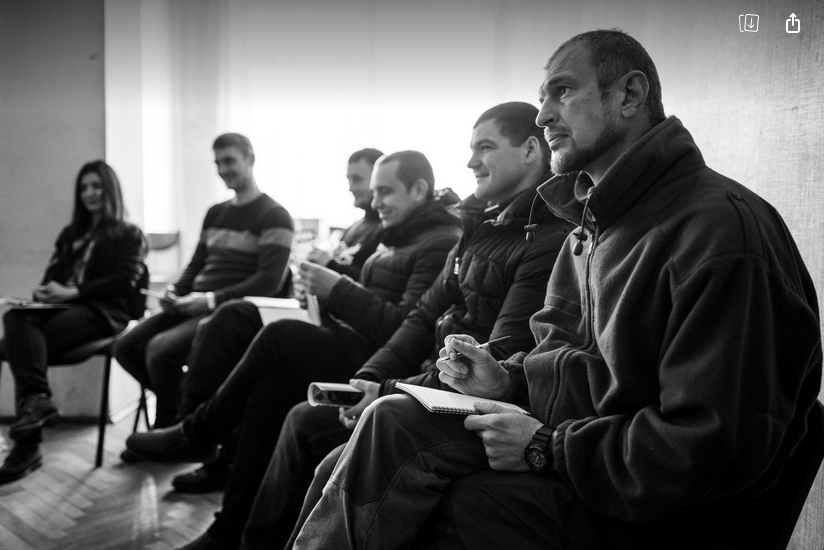
What do you mean when you say that they could not stay with the dilemmas?
The word “dilemma” is a very beautiful Greek word that means two different possibilities, because when there is a dilemma we can see that there are more possibilities than just one.
This is important because that is one of the pillars of democracy and it is related to the ability to make compromises.
And to be able to live with compromise, means that we both have to let go of some of our dreams to create a common dream.
It does not become “my way or the highway”.
And it does not turn into “if you are not with me you are against me”.
We have to learn to live and meet in the middle.
What did you do to help them get out of this state of being with stressful rigid reactions and “black and white thinking”?
It could be challenging sometimes when I would create a training and then there would be six different veterans from six different volunteer battalions all with different ideologies.
Usually they would show affection by bumping their chests against each other in a quite masculine way. But one of the first things I introduced to them was to start to hug each other.
So we incorporated a concept where everyone would have to give 12 hugs to another person every day. Then they would release a lot more oxytocin and this made it easier to work with some of the more rigid reactions.
Next step was to teach them that it was okay for a man to cry. That way I kept adjusting to the needs of the group the same way a tailor would fit a suit to the shape of a person.
Afterwards, everyone became much more relaxed and receptive to learning about how to work with their reactions and learn about communication and negotiation strategies, I used the “Bodyknot” model a lot.7
They were extremely beautiful, warm and friendly people, who really wanted to change their country. And a lot of them started realizing that in order to do so they needed to change something within themselves.
Did you keep running the trainings yourself all throughout those years?
In the beginning I was extremely busy and visited Ukraine many times every year. But my philosophy was always “it takes one to know one”. And I observed from the beginning that the veterans were more open and receptive to the treatment when it was being conducted by another veteran who had been in the same situation as themselves.
So I started focusing on training some of the veterans in our 4 year body psychotherapy program in Bodynamic. And I ended up inviting the three veterans Atilla, Artem and Taras to participate in the Bodynamic Practitioner training in Greece.
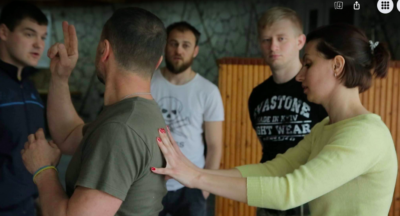
Veteran Ighor Kolodylo, training other veterans.
Then they also got the opportunity to get out of the country for a while and train in more peaceful circumstances.
This way I could train the veterans to eventually become teachers in our shock training programs, and I was able to slowly pull back from being present physically at all of the trainings in Ukraine. They became able to run the programs independently within a series of years.
How did your Bodynamic background influence the way you supported the veterans in making the first Ukraine veteran center?
I had been asked to help them with the creation of the veteran center, but I told them that I did not want to be directly involved in the creation of the center on a daily management level.
I told the veterans that I wanted to support them on how to create it themselves. But that it needed to be their own creation.
In the Bodynamic therapy system we try to find and look at peoples nearest zone of proximal development and then try to support them from there with what they might need.9
It is very different from taking over and doing things on behalf of someone else.
So I supervised them, and I encouraged them to stay independent and not to sell their veteran centers or trainings to anyone.
For me the difference between helping someone and controlling someone depends on how long you stay hanging around.
If you keep staying there, you start “colonizing”.
It is important to be attentive to when people are ready to take something into their own hands and have enough resources to hold on to it.
At that moment it is time for me to leave and give them space to grow with the task. This has been one of the basic principles of our Bodynamic projects throughout the world.
It is very important to respect the cultures where we are working without taking over and making it into a copy of our own.
Were the same training programmes open for both men and women?
It was both for male and female veterans. But many of the wives of the veterans started showing up and asked Artem if he could make a training specifically for them.
They spoke about the changes they had seen in their husbands.
How they had started talking differently, behaving differently, and relating differently to them at home.
Plus some of the female veterans started contacting us and requesting a woman-only training.
I didn’t create those trainings myself because there were already some of the teachers who were ready to take over at that point.
But I came as a visiting teacher and also participated in their last graduation days of the programs.
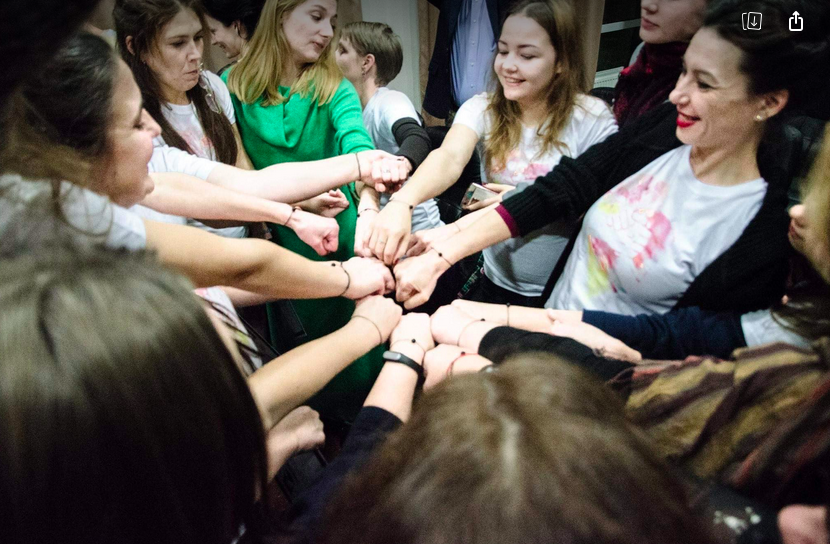
The wives of the veterans during their training. All wearing the bracelet they received at the training.
The Canadian embassy in Ukraine was sponsoring those trainings, and the ambassador also visited the training.
In the end they started making summer camps for the whole family. So the children could participate too.
Here the focus was on creating community and building strong experiences of belonging to the group with mutual connections and dignity for the whole family and community as a group.9
After the first summer camp the parents came to the veteran hub and requested a new kind of specialized training on how to become better parents for their children.
So they wanted a specialized Bodynamic Foundation training that was tailored to becoming a better father. Oleh was working on creating that but then the war started last year in February.
What happened with the projects in Ukraine when the war broke out?
Then we had to reorient our ways of supporting very fast. That meant that Bodynamic had to step in in new ways.
The way we did that was to collect a lot of equipment that we drove to our partners in Poland. Creating fundraising for workshops so we could support women whose men had gone to war financially, and so that we could go in and support some of our good acquaintances with bullet proof vests, protective equipment etc.
Through the Bodynamic association we started creating zoom meetings where people could get support from therapists and share with each other, we also started to collect information about how refugees from Ukraine could get help in different countries in Europe, and we started creating video material.11
At the same time the veteran hub in Kiev closed down because it was at too high a risk of getting bombed because it was at the top of a large building in Kiev until they could open the veteran center in another location.
In the beginning they moved to another in western Ukraine. Then later on they moved back to Kiev into another location.
But what also happened was that most of the people I knew went to war.
So the people I connected to around the veteran project are practically all involved in the war now.
How do you support people who are in war?
We are not trying to teach soldiers to lower their alert system completely because that would be dangerous in the circumstances that require vigilance and alertness for survival.
We are teaching them to take smaller breaks, and using a lot of their bodily skills.
We work on grounding, centering, boundaries, learning to position yourself and energy management. All throughout the body.
These are all basic features of the Bodynamic system.10
One of the veterans recently wrote to me: “Thank you for the bodily exercises, they help me to land back in my body after combat. And they help me not to hate.“
All the work all these passionate people still put into this project ignite the hope in me for a better future for Ukraine.
For me it has been a very emotional journey and it will always have a special place in my heart.
<- Picture Gallery ->
Footnote References:
1 Ditte’s work has previously been featured in various local Ukrainian media sources:
- https://www.politico.eu/article/ukraine-war-trauma-treatment-battle/
- https://ukrainianweek.com/Society/171659
2 “Euromaidan or the Maidan Uprising […] was a wave of demonstrations and civil unrest in Ukraine, which began on 21 November 2013 with large protests in Maidan Nezalezhnosti (Independence Square) in Kyiv. The protests were sparked by President Viktor Yanukovych‘s sudden decision not to sign the European Union–Ukraine Association Agreement, instead choosing closer ties to Russia and the Eurasian Economic Union.” https://en.wikipedia.org/wiki/Euromaidan
3 Key people mentioned in the interview:
- Alina Viatkina has worked as a co-teacher at the female Shock-Trauma training programs and works as a “Tribal Veteran” socialworker.
- Andriy Kozinchuk is a veteran and psychologist
- Anika Vasadze is a dance therapist and trained as a Bodynamic Practitioner.
- Artem Denysov is CEO of Veteran Hub and trained as a Bodynamic Practitioner, and his wife Vika Denysova is also working with Veteran Hub organization.
- Ighor Kholodylo works with veterans and is trained as a combat medic specialist in the army.
- Ivona Kostyna is head of Veteran Hub and has participated in the Bodynamic Shock-Trauma training
- Oleh Hukovsky is a psychiatrist and Bodynamic Analyst and international teacher.
- Taras Kovalyk is trained as a Bodynamic Practitioner and is a “Tribal Veteran” socialworker.
- Valeriy Chobotar “Atilla” – is a veteran and trained as a Bodynamic Practitioner and is a “Tribal Veteran” socialworker.
4 In the book “Body Encyclopedia. – A Guide to the Psychological Functions of the Muscular System” by Lisbeth Marcher and Sonja Fich, 2010 p3. They describe the two terms in the following way:
Mutual connection
We define Mutual Connection as the very close relationship that occurs between two or more people; it also requires that each person maintain individuality within that relationship.
In a relationship based on Mutual Connection, the partners come forth with their experiences and emotions verbally and/or nonverbally. Their exchanges include their differences of experience and emotion; they grasp and accept those differences; and they rise together to a new level where each person has acquired new knowledge about themselves and about the other. Besides holding new learning for all the individuals involved, Mutual Connection spreads out like concentric waves in water as the people involved pass the new learning on to others in new contacts, etc.
Mutual Connection also exist on a more global level: there is a deep innate knowledge of how all life on earth is in an interaction process with every other, and in spite of differences, like that between a mosquito and an elephant, all forms of life depend on that coexistence, which offers an experience of the global interaction with the all.
The spiritual part of Mutual Connection is close to this description but also involves interaction with the collective unconscious and with what we call individual soul energy – life energy and the Higher Me.
Dignity
We use the term Dignity to describe a person’s inner sensation and feeling that she is able to own her inner values and deep ethics, respecting them and living according to them. Dignity also involves authentic acceptance of certain commitments, actions and rights.
In the Danish language dictionary it describes Dignity with a quotation about the thinking of Emmanuel Kant (1724-1808): “It is not what we think but what we are within ourselves that gives us true human dignity” (Krarup 1906, 9).”
If you want to learn more about Lisbeth Marchers ideas and concepts we recommend to read the article “Individuation, Mutual Connection, and the Body’s Resources”
6 According to the theory developed by Lisbeth Marchers and the cofounders of the Bodynamic system, “Character structures” are the formative and creative results of splits occurring in developmental stages with specific topics and themes that the child develops during childhood. This leads to a unique combination of characteristics in the adult which is displayed physically both in the bodily posture and movements, in the muscular tension and in the overall behavior of the child and later on in the adult person. If a child experiences a severe shock trauma early on, it will disrupt the normal development of the “Character Structures” and can in severe cases increase the risk of developing complex PTSD later on in life. To get a better understanding of the specific “Character Structures” mentioned here, you can read more at: https://www.bodynamic.com/theory/the-seven-developmental-stages/
7 In the Bodynamic System, Lisbeth Marcher and her colleagues have developed a model for dealing with conflicts, negotiations and improving communication in general in everyday life. The model is called “The Bodyknot Model” and has been described in detail by the Danish journalist Erik Jarlnæs. You can read more about it here: https://www.bodynamic.com/blog/the-art-of-undoing-knots/
8 The concept and theory of “The Zone of Proximal Development” was developed by Lev Vygotsky. The Zone of Proximal Development is defined as the distance or space between what a learner is capable of doing without assistance and what a learner can do with adult guidance or in collaboration with another person who is more developed in a certain area.
9 If you are currently affected by the war in Ukraine you can find more Bodynamic resources including a manual at this link: https://www.bodynamic.com/blog/self-support-manual-exercises-for-crisis-work-in-english-ukrainian/
Also see Ditte’s talk about creating change in societies affected by war here: https://youtu.be/NGDnJN9eMn0
10 According to the theory of the Bodynamic System, besides the “Character Structures” mentioned above (which is developmental stages with sets of themes occurring at certain age periods), the child is developing “Ego Functions” which are certain life themes with aspects of emotional, cognitive, affective, behavioral and motor development that is not for the most part bound to a specific age-level but is being developed throughout several age-levels. For example: a child learns about several different but interrelated aspects of the Ego Function called “Boundaries” during its development through all the 7 “Character Structure” phases from age 0-12.

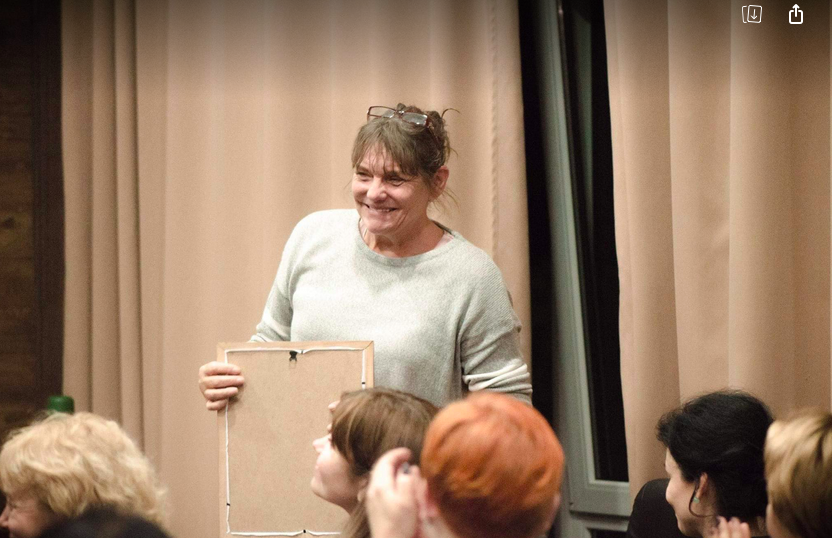
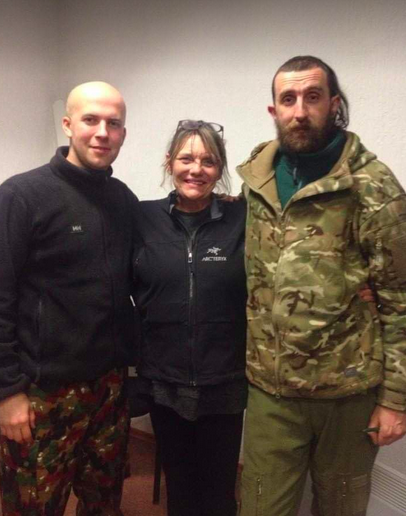
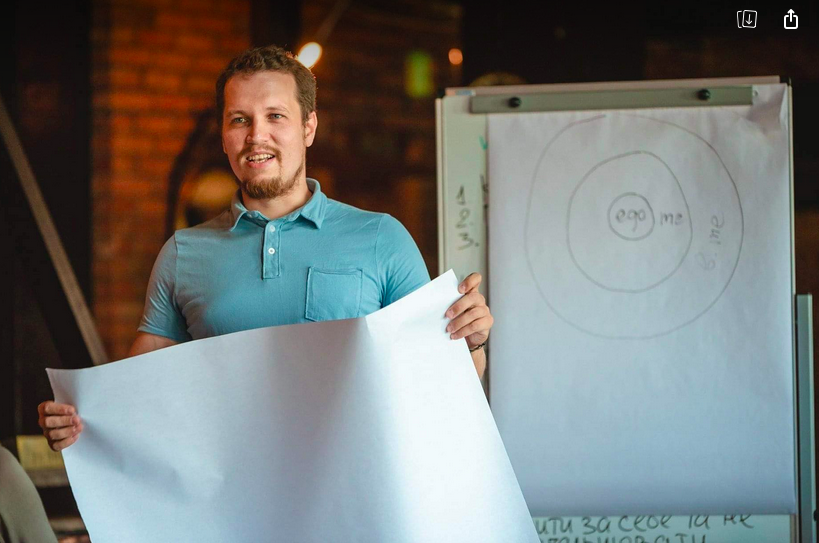
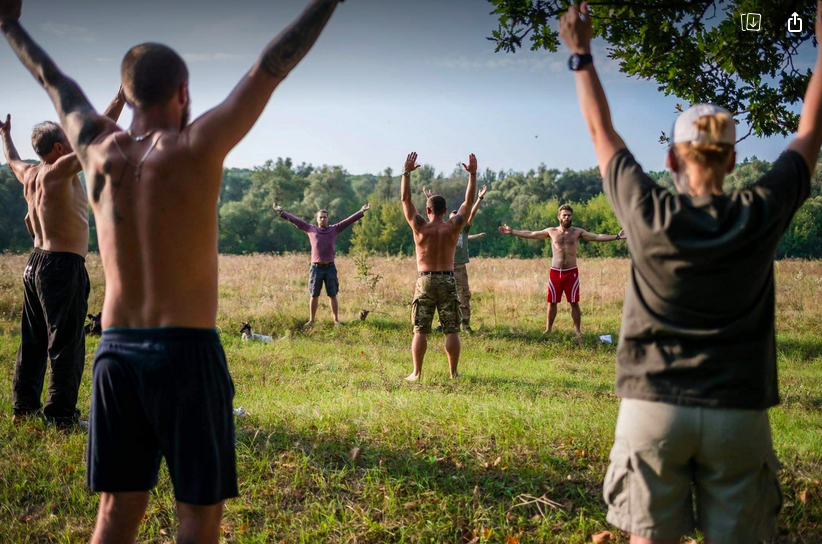
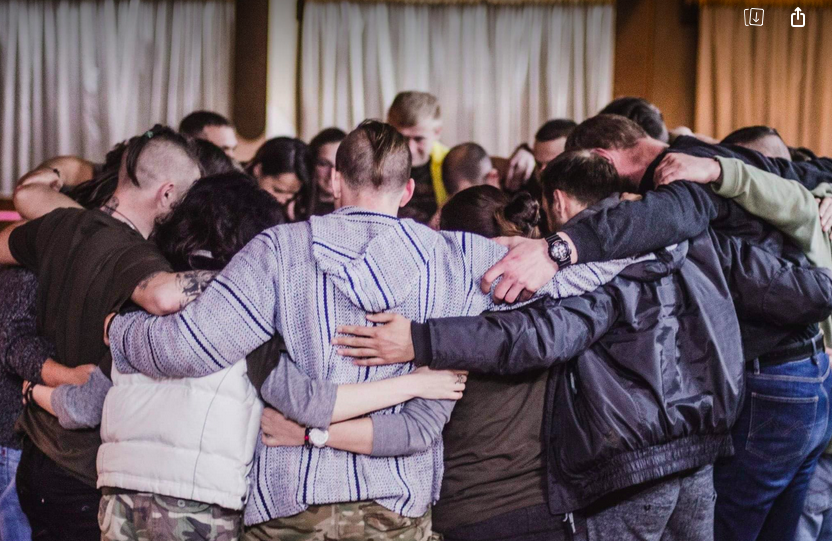
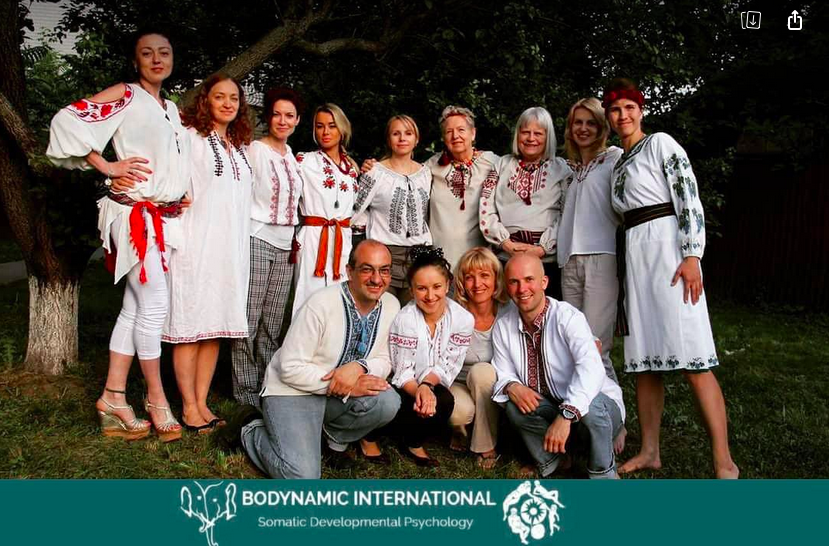
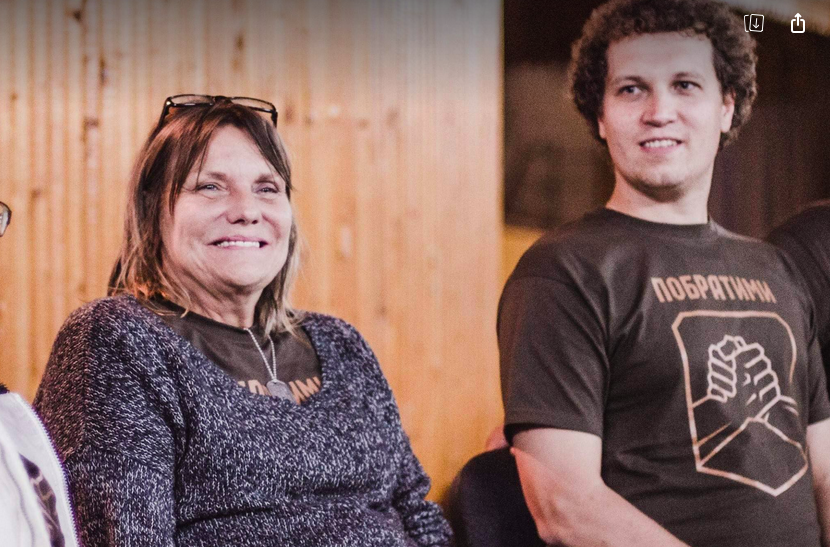

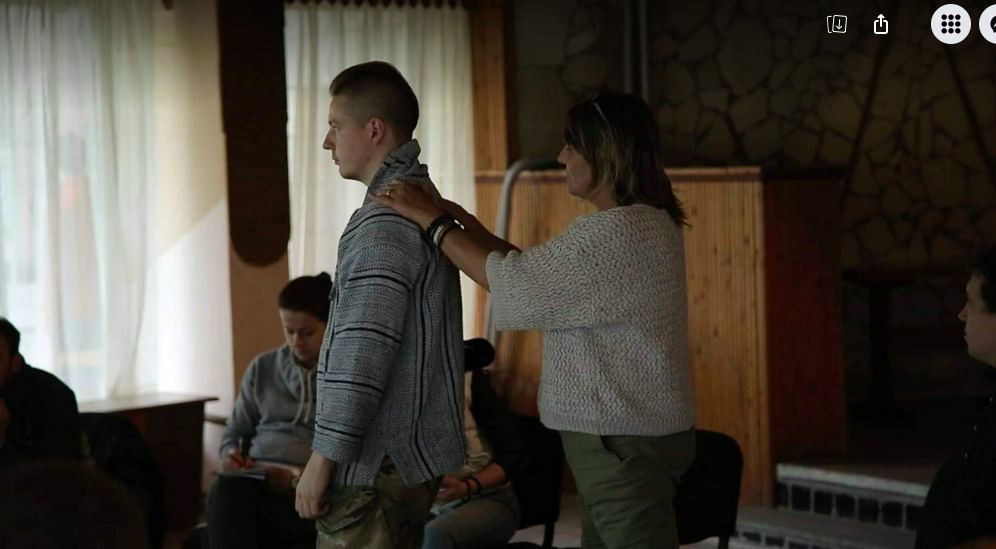

























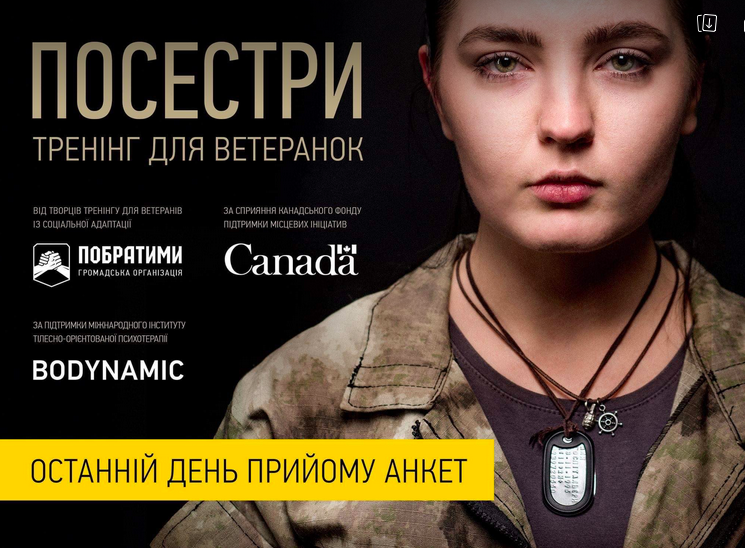
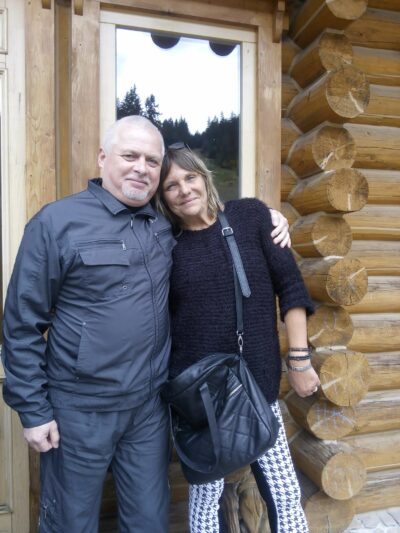 Summary of my experiences through the training
Summary of my experiences through the training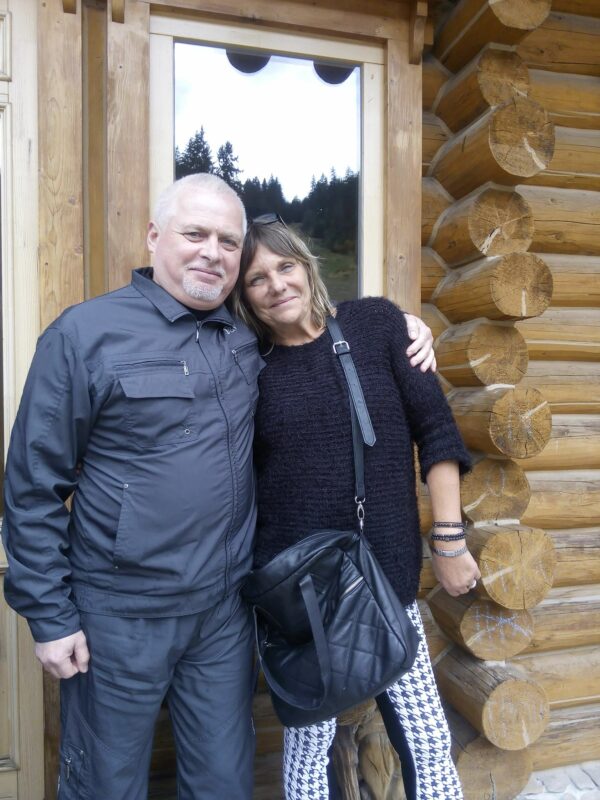
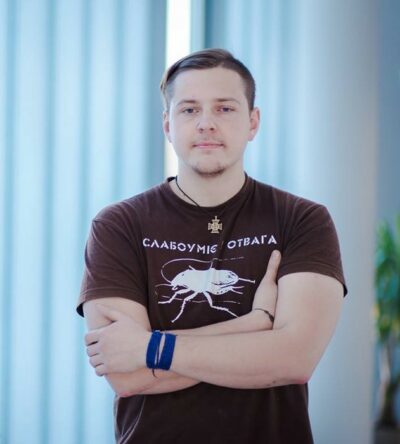 Searching for Dignity
Searching for Dignity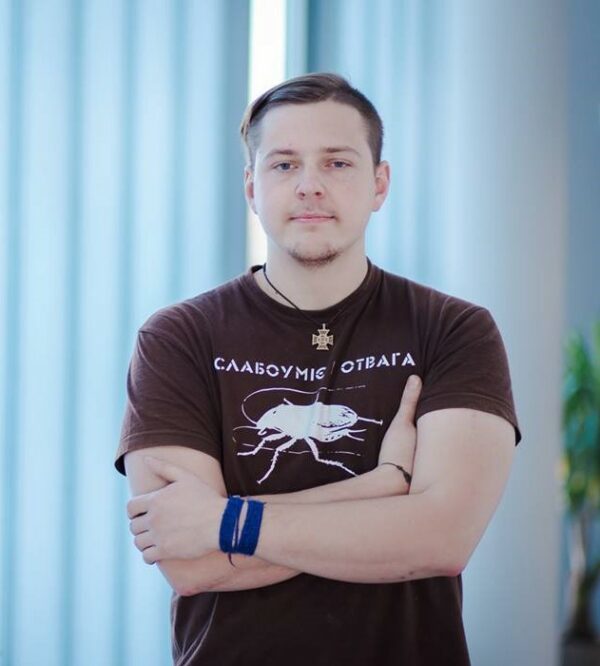
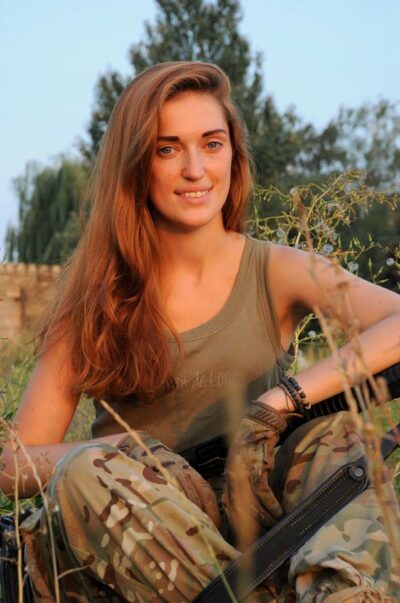 Kateryna Podzizey, volunteer
Kateryna Podzizey, volunteer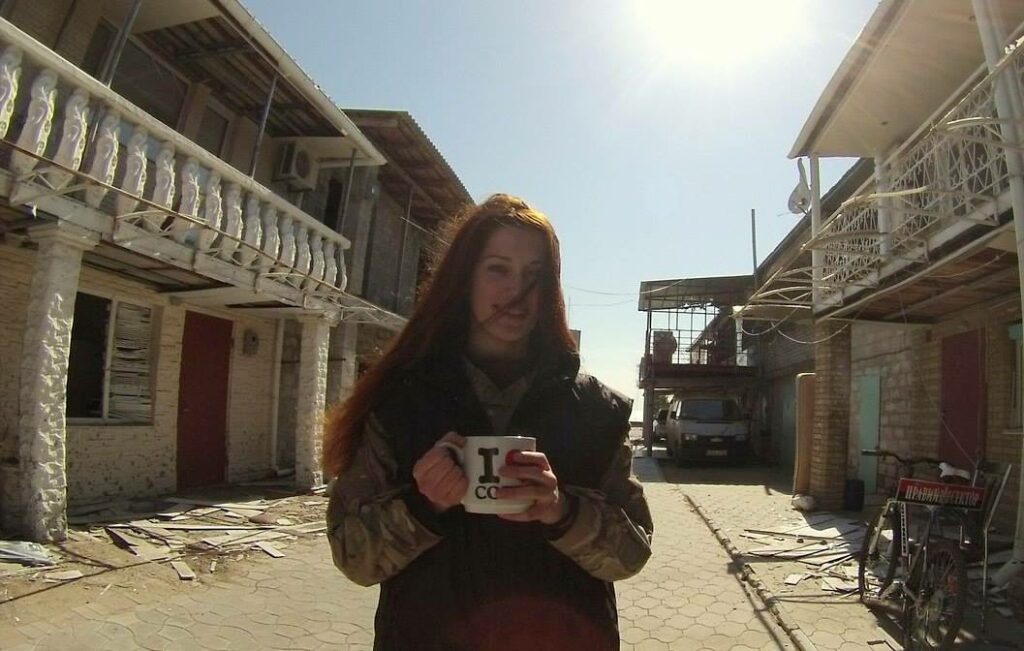
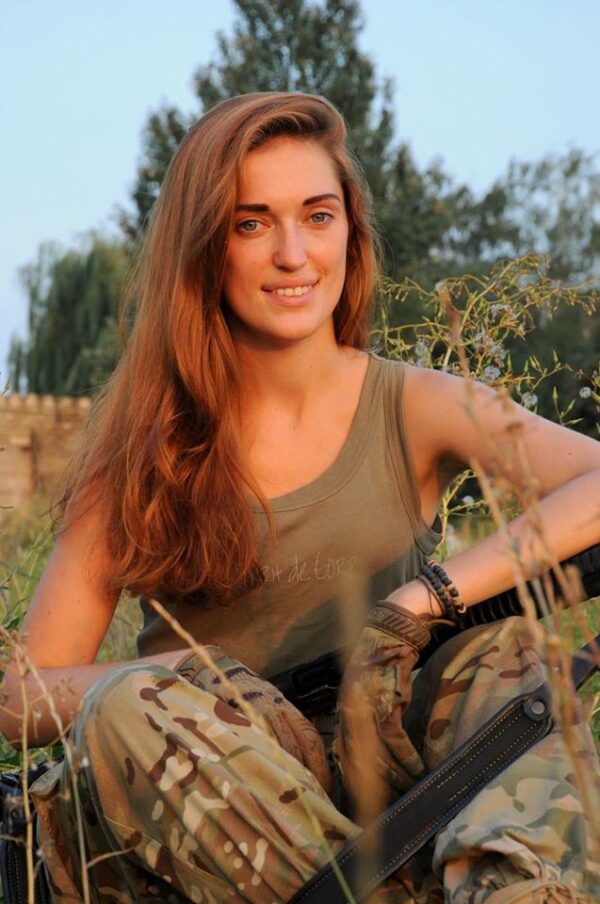
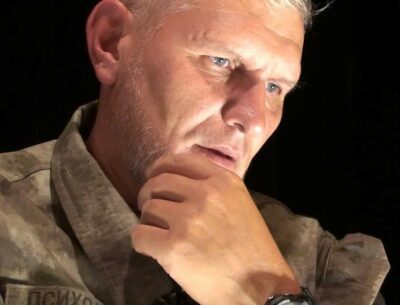 My name is Oleg Obernihin. I am 48 years old. I am from Kharkiv, Ukraine.
My name is Oleg Obernihin. I am 48 years old. I am from Kharkiv, Ukraine. 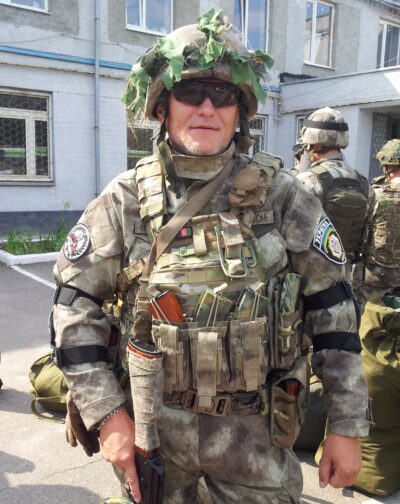
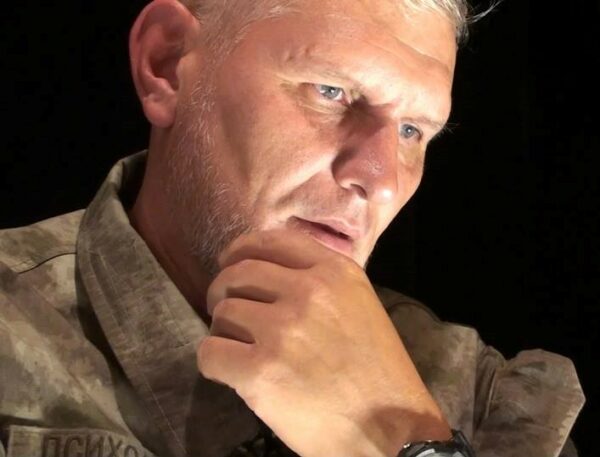
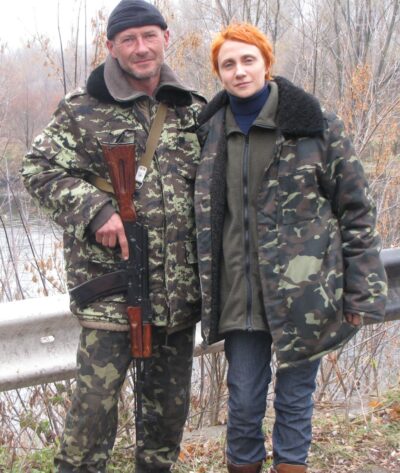 A year of coming to the front as a civil volunteer. Eight month – as part of my 12th Battalion. A year and half since my fist Maidan shock…
A year of coming to the front as a civil volunteer. Eight month – as part of my 12th Battalion. A year and half since my fist Maidan shock…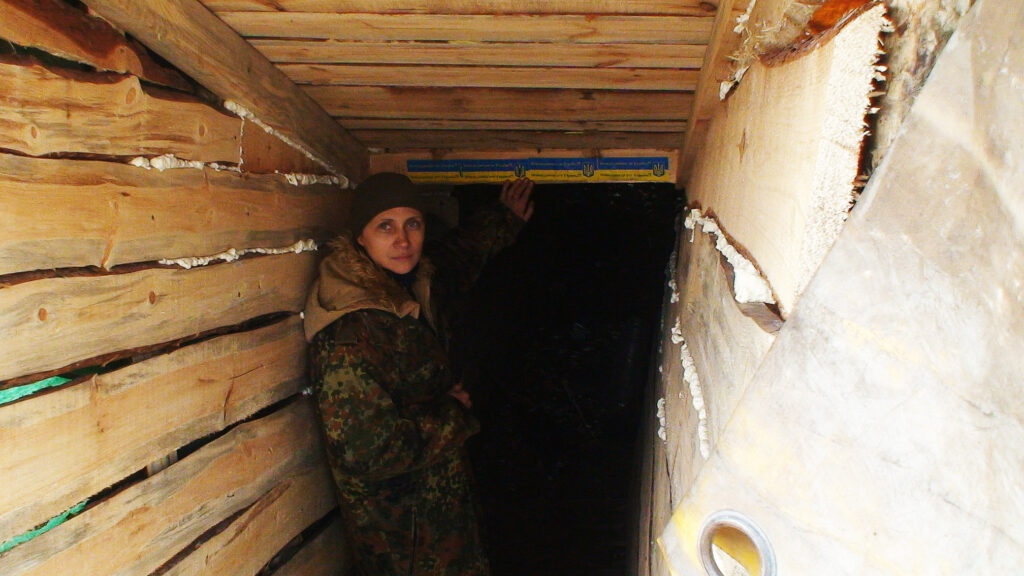
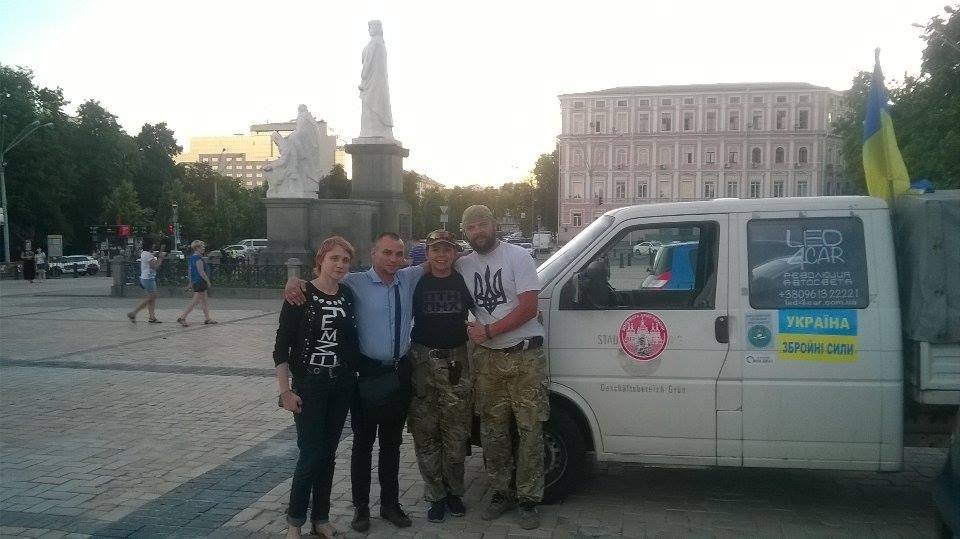
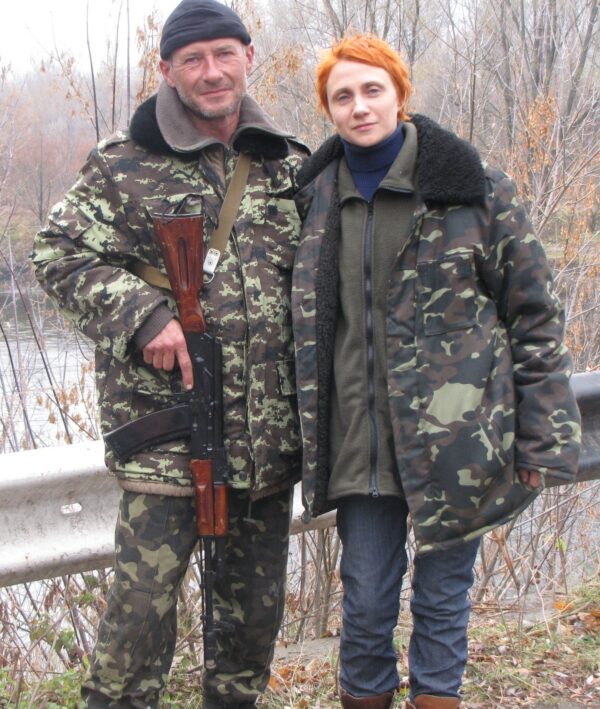
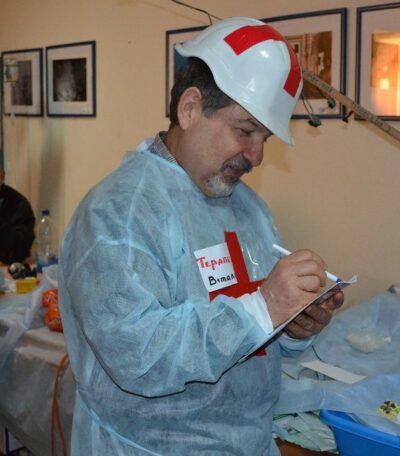 I “became sick” on February 23 2014 around 10 am, when the most dramatic Maidan events were over. Despite 25 years of medical experience, the last days of the conflict were especially hard for me. I was psychologically ready for the number of loses among the Heroes. However, the endless stream of sick and injured people with their incredible stories was absolutely unexpected.
I “became sick” on February 23 2014 around 10 am, when the most dramatic Maidan events were over. Despite 25 years of medical experience, the last days of the conflict were especially hard for me. I was psychologically ready for the number of loses among the Heroes. However, the endless stream of sick and injured people with their incredible stories was absolutely unexpected. 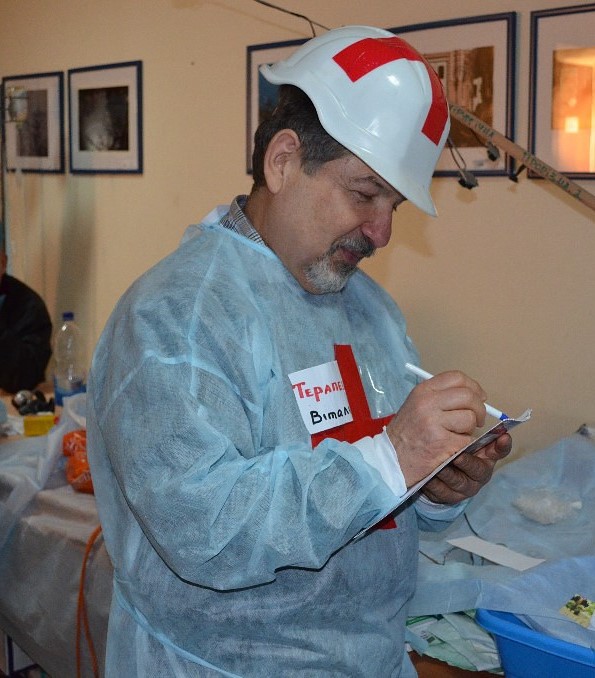
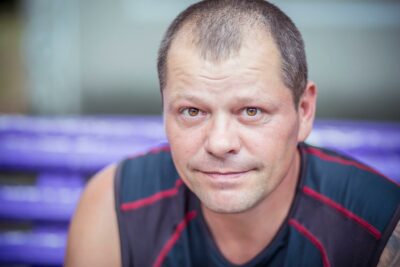 I think in every person’s life once emerge people who help to rethink their life completely, help to refill with power and energy, encourage some major changes. They make you want to review your old meanings and find new guidance for your existence. It doesn’t matter how they do it, this impulse is what really matters.
I think in every person’s life once emerge people who help to rethink their life completely, help to refill with power and energy, encourage some major changes. They make you want to review your old meanings and find new guidance for your existence. It doesn’t matter how they do it, this impulse is what really matters.